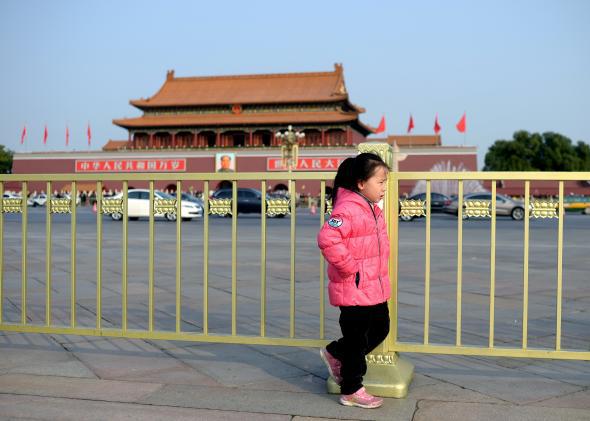Give the Chinese Communist Party’s Central Committee credit for unpredictability. All the signals sent out before this week’s highly-anticipated third plenary were that reforms on political rights were unlikely but that something significant might be in the works on China’s economic “reform and opening up.” Instead, the economic measures announced—particularly on the all-important issue of land reform—have been vague and difficult to parse. But the government has announced some significant measures on personal freedoms, including abolishing “reeducation through labor” camps, reducing land confiscations, reducing the number of crimes eligible for the death penalty, and—in what will be the most publicly scrutinized move—easing the notorious “one child policy.”
Under the new system, couples will be allowed to have a second baby if either parent is an only child—a significant slice of the population given that the policy has been in place since 1980. This isn’t quite as dramatic a change as it sounds. China has been gradually adding exceptions to the rule for years amid concerns about the country’s aging workforce.
In rural areas, couples were already allowed to have two children. Many other couples were allowed two children if the first was a girl. Different rules also applied to China’s ethnic minorities—about 8 percent of the population. Authorities already claimed that since 2007, the strict one-child policy has applied to less than 40 percent of the population.
The current change won’t go far enough for human rights groups who want restrictions on family size scrapped altogether. Abuses related to the policy—including the forced abortions and sterilizations, highlighted by now-exiled activist Chen Guangcheng—are rampant.
The policy has also been criticized for leading to a rise in sex-selective abortion among couples who want their only child to be a boy. This is technically illegal in China, but nonetheless common. According to official statistics, 117.7 boys were born for every 100 girls in 2012. The normal global ratio is between 103 and 107 boys for every 100 girls. This imbalance has had dramatic consequences for Chinese society and possibly also the global economy.
Unfortunately, the new change to the family size rule may not eliminate this problem as much as some might hope. While it is generally assumed that the OCP is the primary culprit behind the gender imbalance, an NBER working paper released last year based on newly available data from the late 1970s and early 1980s found that rural land reform policies introduced during this period, particularly the break-up of collective farms, seemed to have a more dramatic impact on birthrates than the introduction of the OCP.
As I summarized earlier this year, “For rural couples, who were allowed to have two children and generally preferred at least one of them to be a boy, the second child was 5.5 percent more likely to be a boy after land reform was introduced in a given area. The introduction of the OCP, which happened around the same time, had an effect as well, but the authors find that it’s almost entirely eliminated when you control for the effect of land reform.”
India, which doesn’t have birth rate restrictions, also has a worsening “missing girls” problem, and troublingly, as in China, sex-selective abortion appears to be more common among better educated, more affluent couples. Sex selection has also been spreading to other countries in Asia, which don’t have China’s draconian birth laws.
This is not to say that the new change isn’t a good one or that we shouldn’t hope for more. The human rights abuses carried out by local authorities trying to enforce the policy have been truly horrific. And it seems clear that as China’s population becomes more affluent and urbanized, birth rates will fall anyway as they have almost everywhere else.
But unfortunately, the gender imbalance problem is going to be with China for a while, may be worsening in some regions, and welcome as it is, loosening the one child policy might not be enough to fix it.
